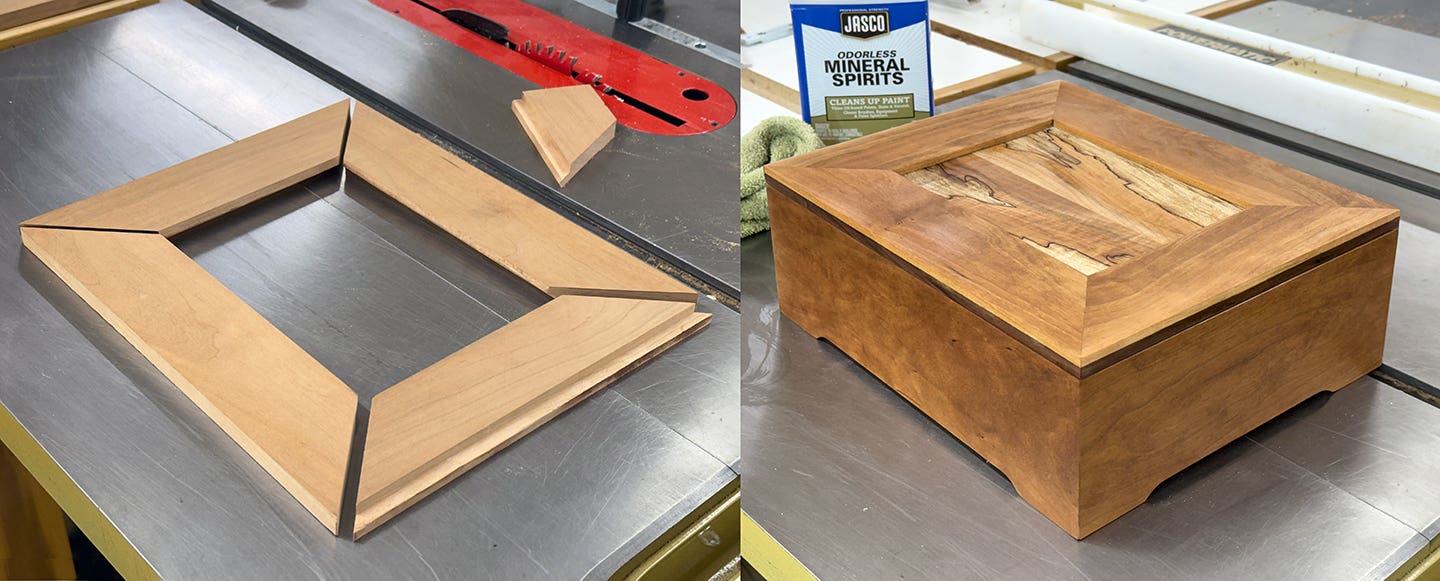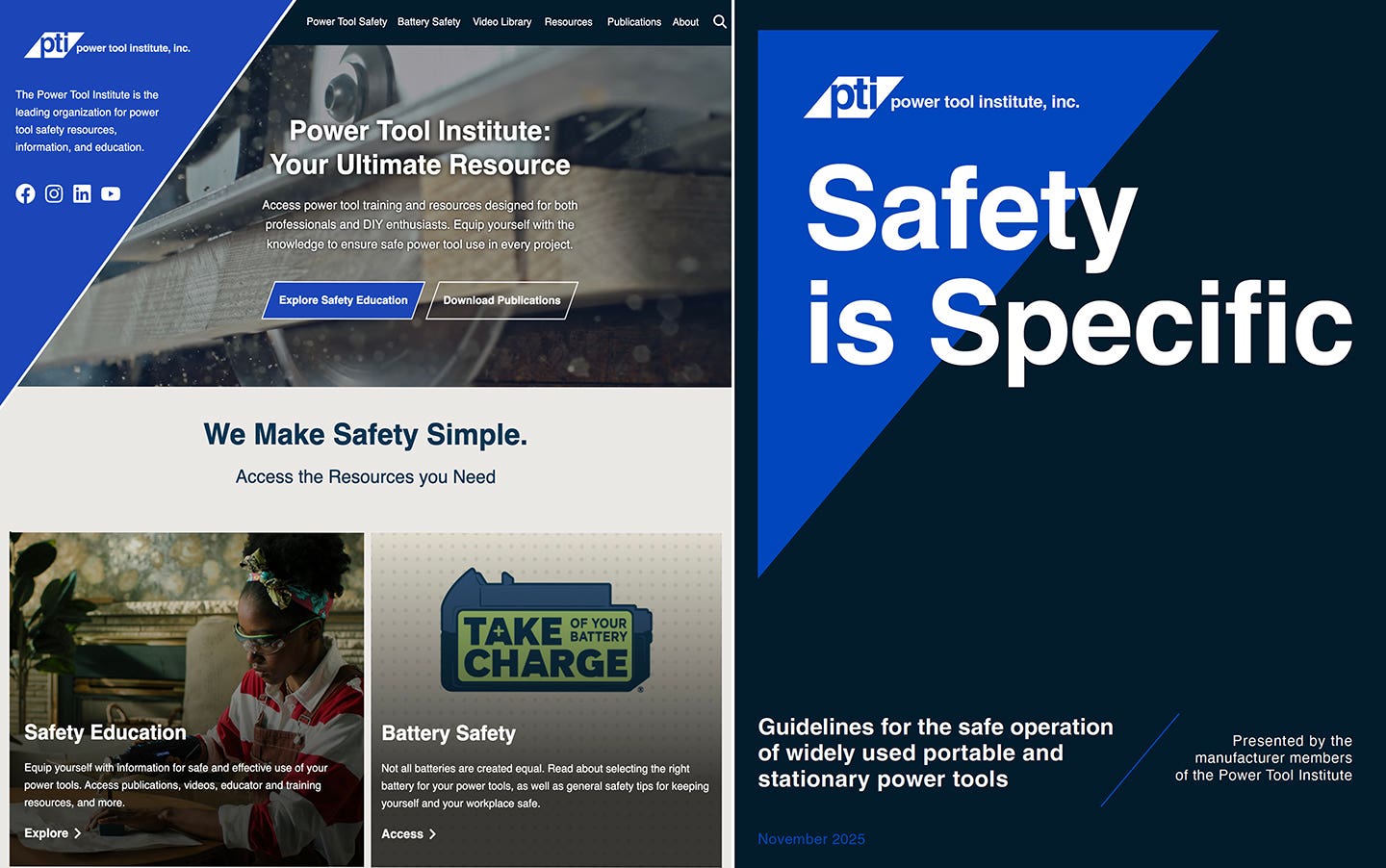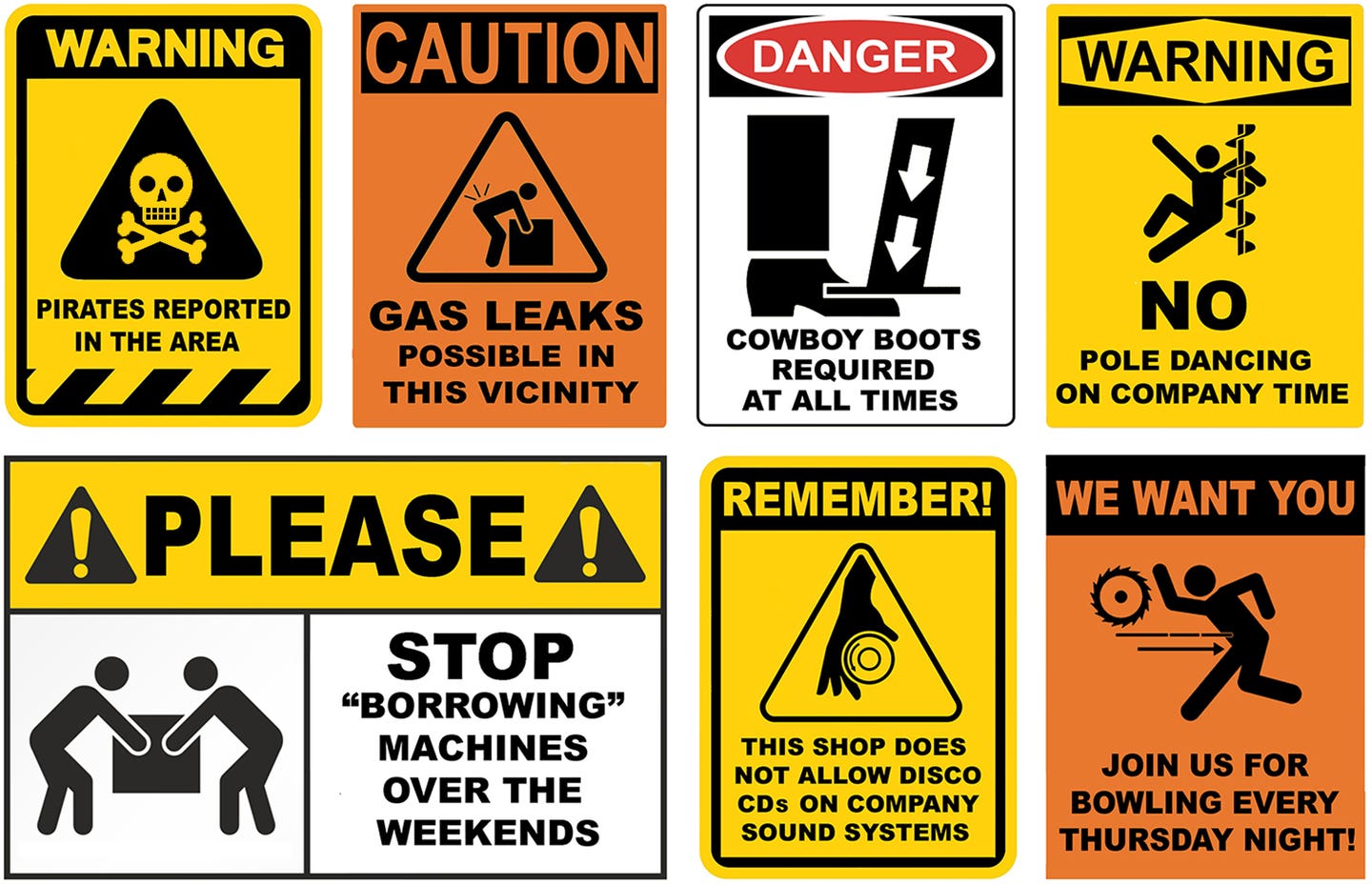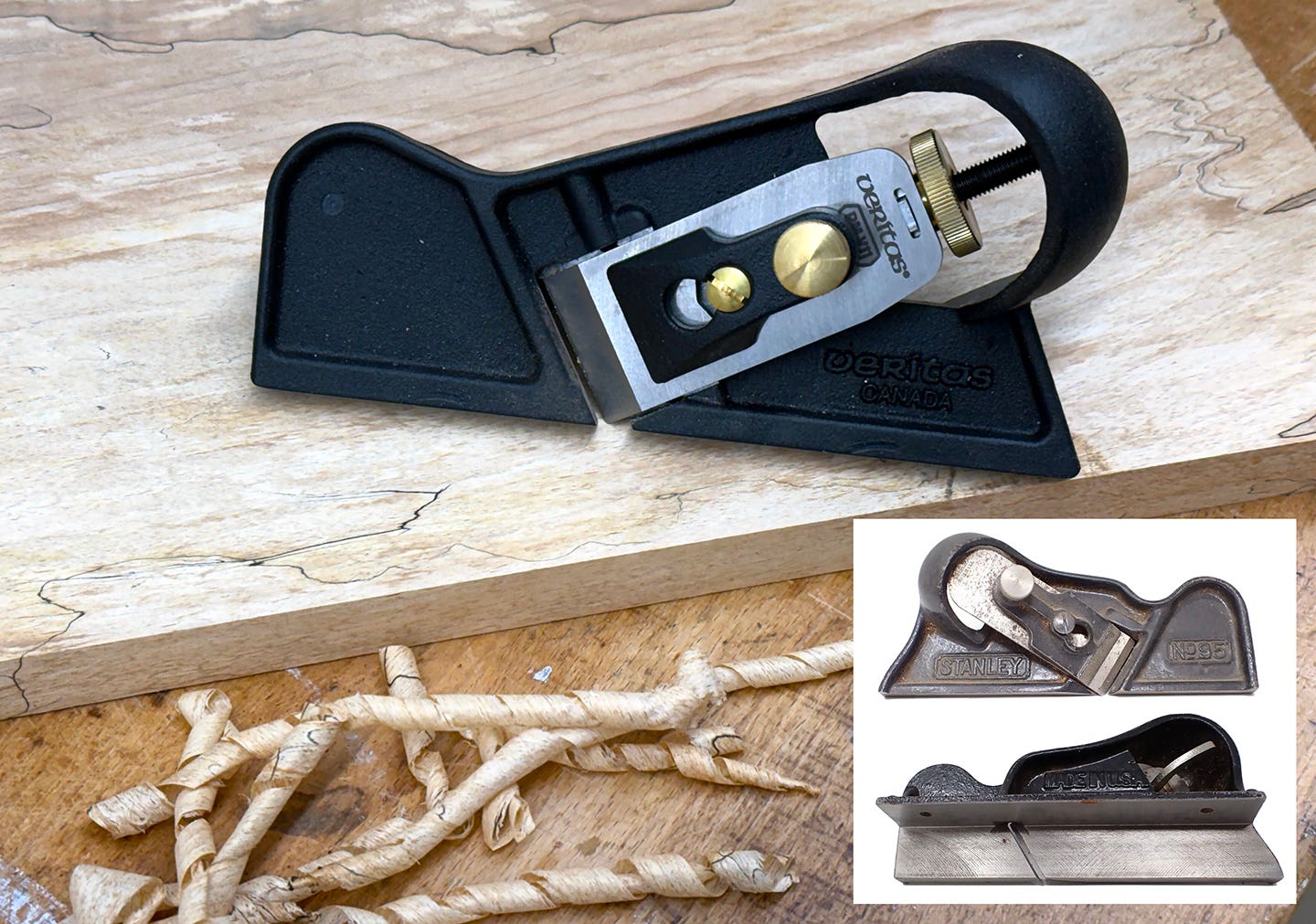Cutting through the noise on air compressors
They’re noisy and bulky and a bit intimidating, but air compressors are unbelievably useful in the woodshop. They can be used to run nail- and staple guns, spray finishes, operate…
They’re noisy and bulky and a bit intimidating, but air compressors are unbelievably useful in the woodshop. They can be used to run nail- and staple guns, spray finishes, operate pneumatic clamps and jigs, create vacuum seals, even top up the tires on a delivery truck. A single air compressor can provide cheaper, safer and more easily controlled power than a shop full of tools that are equipped with individual electric motors. And, for most woodworkers, using compressed air is as simple as turning on a machine and running a hose.
If you’re introducing or updating compressed air in your shop, there are some details to consider. Most woodshop compressors are positive-displacement models that use a pump (piston) to force air into a cylindrical tank. A one-way valve keeps the compressed air inside the tank. Larger models might use rotary screws to accomplish the same end: two helical screws force air between them and into a chamber. Another take on design is a vane. In this case, a rotor with several blades attached does the job. Whether it’s a piston, rotary screw or vane, the idea is to keep pushing air into a confined space, compressing its volume. When released, the air needs to expand and that’s what provides the pressure and velocity (speed) in pneumatic hoses.
Smaller compressors are usually single-stage. That is, they have one tank and one valve. The piston pushes air into a confined space on the down-stroke, the space behind the piston fills with new air and the piston pushes that new air into the confined space on the next down-stroke. A valve stops the compressed air from escaping. Single-stage compressors usually handle pressure up to about 150 psi (pounds per square inch), although most light-duty models top out at about 125 psi.
The unit of measurement here, psi, is worth mentioning. It quantifies compression. That is, it tells us how much pressure a confined substance (air, water, gas, etc.) is under to keep it confined. The air that we breathe is confined within our atmosphere and the weight of the atmosphere compresses it at sea level to about 14.7 pounds per square inch. At higher elevations, the pressure is slightly less. Most foreign countries now use bar pressure as their unit of measurement, rather than psi, but here in the U.S. we are slow to change. The bar and millibar were originally determined in 1909 by William Napier Shaw, the director of the Met Office in London. The bar system essentially uses the equivalent of that 14.7 psi at sea level as its base and most of us are vaguely familiar with it as a unit for barometer readings.
So single-stage units generally deliver compressed air up to about 125 psi. Two-stage compressors are a little more complicated. In this case, there are two chambers and two pistons. In general, the first chamber compresses the air and the second one stores it. The big advantages here are increased pressure (more than 150 psi) and continuous delivery: these units don’t run out of pressure very easily. Two-stage compressor motors can be electric, but for remote work such as running jackhammers, they can also be equipped with diesel or gasoline power plants. They also run cooler, so they don’t wear out as quickly.
Two-stage and twin
Not all two-cylinder compressors are two-stage. Many single-stage compressors come with two tanks and these are known in the trade as twin-cylinder units. Their advantage is simply that they double the amount of compressed air available without having to run a second compressor. Spotting the difference between a twin and a two-stage is usually a matter of noting that in the latter, the second tank is smaller than the first. That’s because the two cylinders are working at different pressures and volumes. A two-stage also has a means of releasing heat generated during the first stage (compression) before passing the air to the second stage (storage). For that, there will be a radiator located between the cylinders. Some large two-stage compressors don’t have storage tanks: they operate “on demand.” Smaller units, and all single-stage compressors, require a storage tank.
Almost without exception, a two-stage model is more expensive to buy and less expensive to run. A good rule of thumb is this: a shop that only occasionally uses small amounts of compressed air will do fine with a single-stage compressor (single or twin cylinder), while a shop that requires continuous duty should consider a two-stage unit.
Motor size isn’t the best way to measure the ability of an air compressor. The air pump size is more critical than the motor size. The pump’s ability is measured in terms of its maximum delivery potential. For example, it might be rated at something like 5 cfm (cubic feet per minute) at 90 psi. In other words, the unrestricted flow of air through the hose when the regulator is set to 90 psi will be five cubic feet per minute. Increasing the size of the motor won’t help unless the speed of the pump is also increased by changing the diameters of the pulleys. However, pumps wear out very quickly when they are pushed to operate at higher speeds. Most are comfortable running at less than 1,000 rpm. The motor needs to be strong enough to run the pump at its optimum (not fastest) speed. And the pump needs to run intermittently with periods of inactivity that allow it to cool down. If a single-stage compressor is running continuously just to recharge the tank, then it’s time to upgrade to a larger two-stage.
Determining need
And that brings up sizing a compressor for your woodshop, which is a relatively easy process. Walk through the shop and make a list of every pneumatic tool or fixture. Each one will have its required cfm written on it, either stamped into the casing or on a sticker. Back at your desk, make shorter lists of the tools that will be run simultaneously (will somebody be using a stapler at the same time that another worker will be spraying finish?). Determine which list requires the most simultaneous cfm. Then add a fluff factor of about a third, because somebody is bound to mess with the schedule or the air lines might leak a bit or you’ll hire another guy and forget that he, too, needs to run an air tool.
Now you know the maximum volume (cubic feet per minute) of compressed air that your shop requires.
Go back through the tools and see which one requires the highest pressure (psi) to operate.
Armed with these two numbers (required volume and maximum pressure), it’s time to go shopping. And the first question your salesperson should ask you is: what’s the power source? This could be 110/ 220-volt single phase or three-phase electric or perhaps you can house the compressor outdoors in warmer climates to reduce noise and that opens the possibility of running it on fossil fuels. These models are more widely available than one might think. For example, Rolair offers nine portable (wheeled) gas-powered models under 21 cfm and a stationary model two-stage equipped with a 10-hp Honda engine that delivers up to 33.7 cfm at 175 psi.
If air tools are only used for installations (not manufacturing), keep in mind that small compressors shouldn’t be run using an extension cord. They just can’t handle the loss of voltage and the pumps tend to burn out very quickly.
“The two main factors to consider when purchasing an air compressor are CFM output, and life hours of the pump. Unfortunately, many people still buy based on tank size and horsepower. Those two factors can be misleading because they do not ensure life expectancy, nor do they indicate how much usable air you will have. A good quality compressor can last 15-plus years with minimal maintenance,” says Mike Kelley, vice president of Rolair Compressors.
How minimal?
Most small compressors require very little maintenance. There’s a spigot on the bottom of the storage tank that has a butterfly handle and it’s designed to drain water from the tank. Moisture in the air can build up very quickly depending on the climate (faster in Seattle than Denver, for example) and it needs to be drained frequently or the tank and all of your tools will rust from the inside. The air quality will also be poor. See the compressor manufacturer’s instructions on how and when to drain the tank.
Other than that, some small compressors also require checking a dipstick. For example, Senco models PC1130 and PC1131 are “oil-splash” lubricated because they are designed for professional, rather than strictly homeowner, use. The lubricant level needs to be checked frequently and topped off on occasion (see the manual for details). Most homeowner models are “oil-free,” which means that the lubricants are sealed in and permanent.
Speaking of oil, compressed air needs to be filtered so that it is both dry and clean. But some tools require an external source of lubricant and inline lubricators are designed to add drops of oil to the air as required. The device should be located close to the tool, so that the oil doesn’t dissipate somewhere in a long run of pipe and so that tools not requiring oil don’t have to deal with it as a contaminant.
One final cost-cutting note: in a small, one-man shop, low-pressure air (120 psi or less) can be delivered by permanently securing hoses to the ceiling with hose clips, rather than having to run expensive metal gas pipe to each workstation or having several hoses in the way as they snake across the shop floor.
This article originally appeared in the April 2013 issue.
A.J. Hamler is the former editor of Woodshop News and Woodcraft Magazine. He's currently a freelance woodworking writer/editor, which is another way of stating self-employed. When he's not writing or in the shop, he enjoys science fiction, gourmet cooking and Civil War reenacting, but not at the same time.







